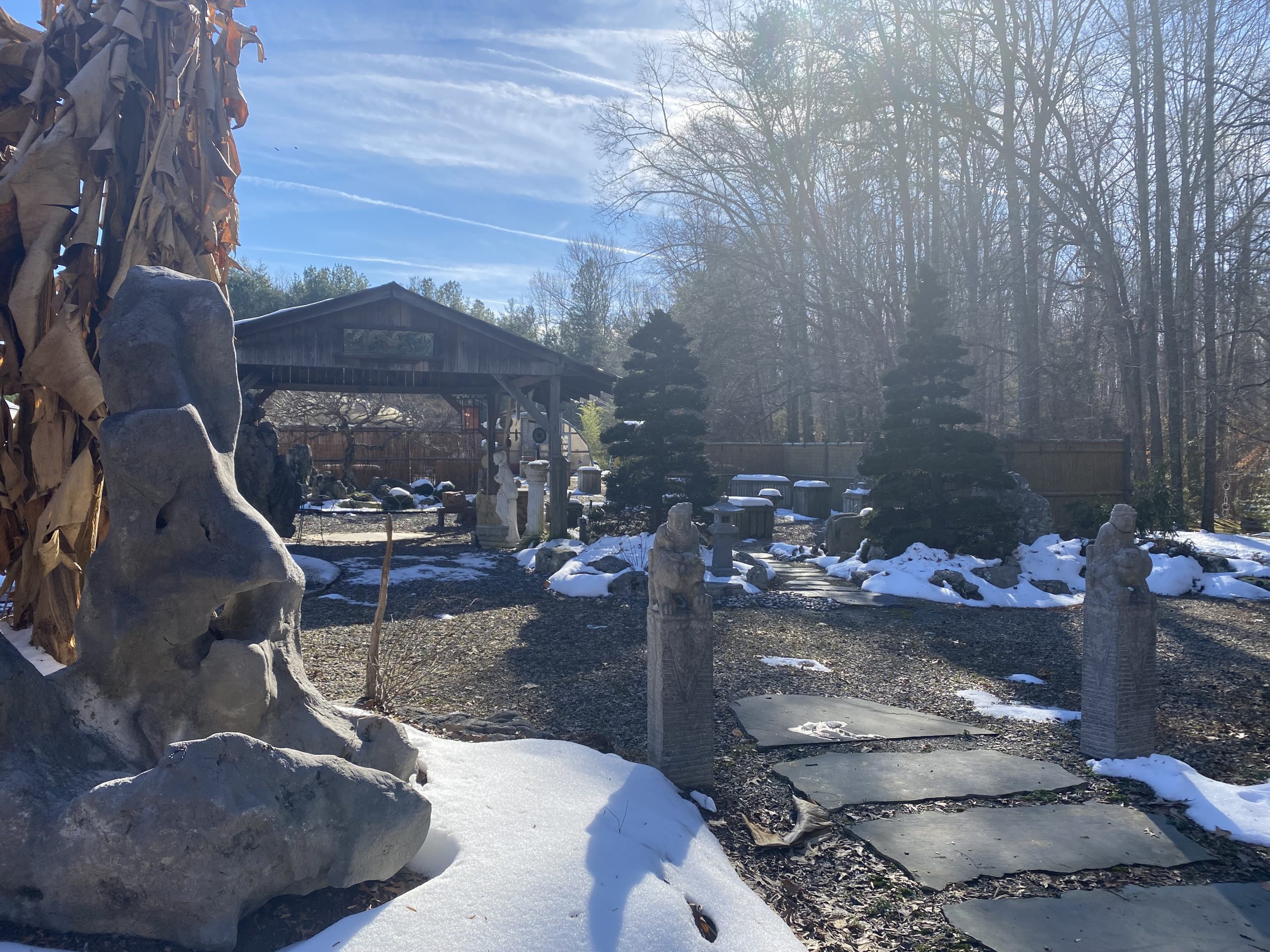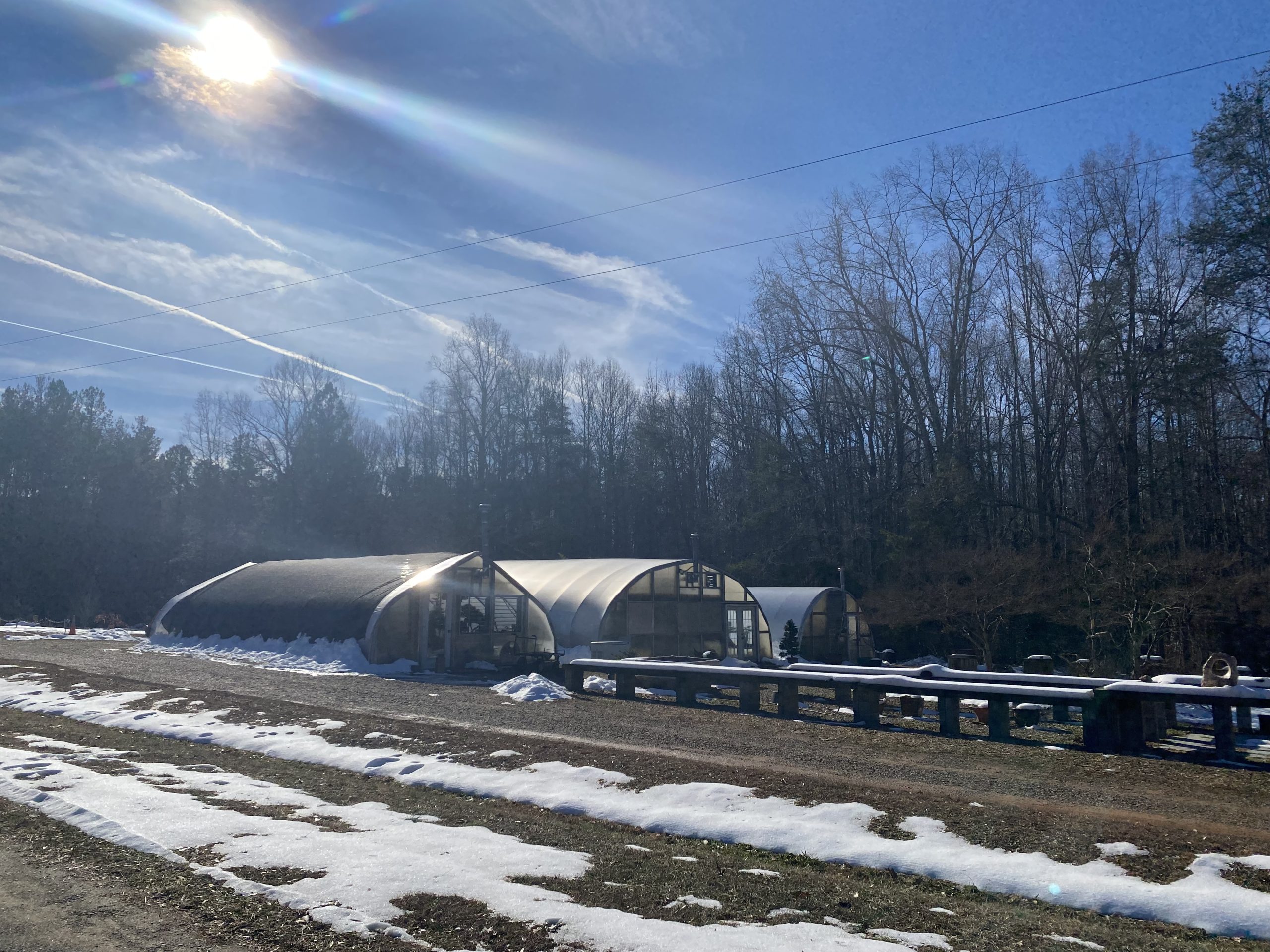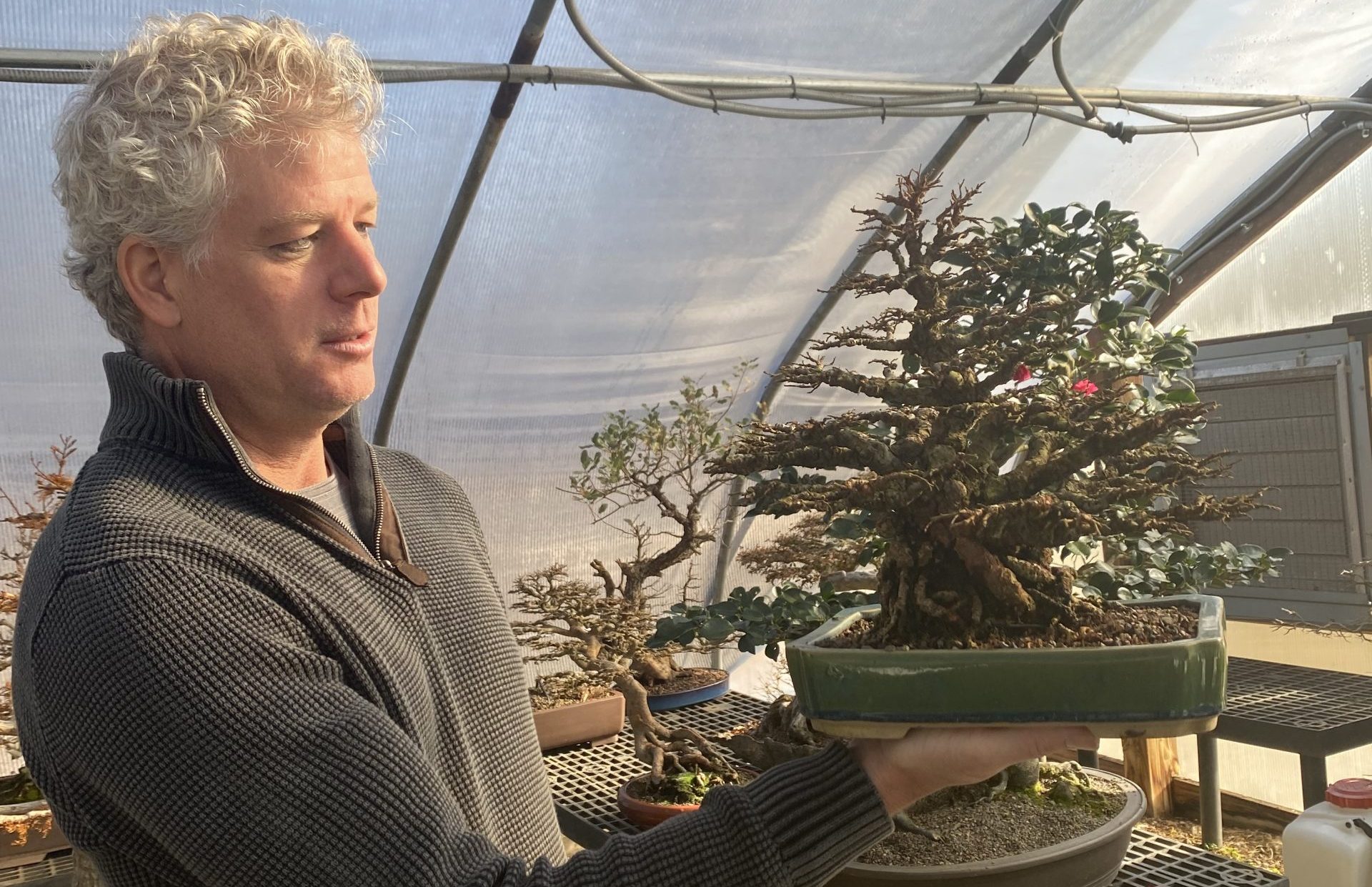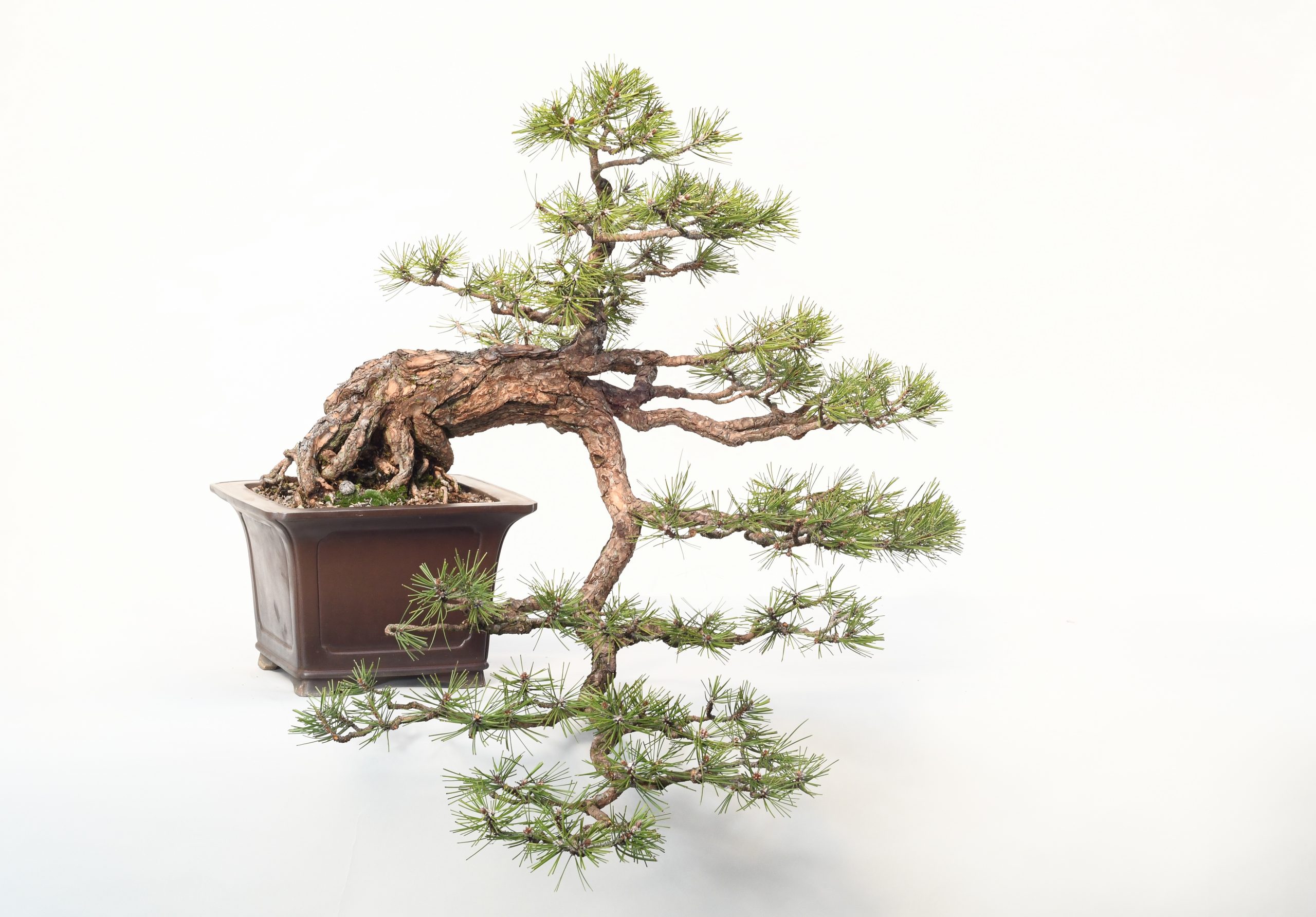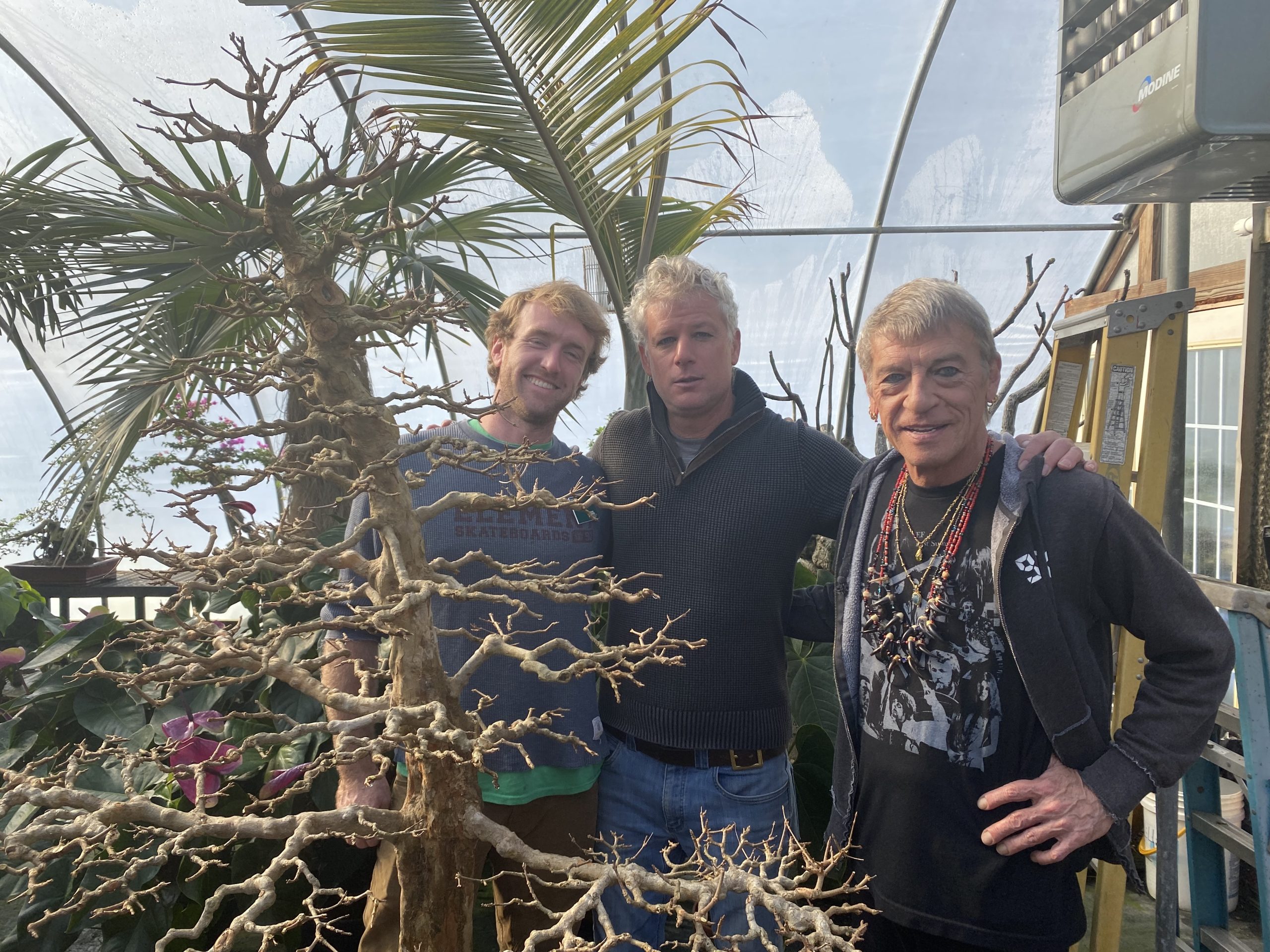Bonsai: The Art of Doing
It was a cold, January morning, and I was on the way to visit Gardens Unlimited, a bonsai tree nursery in Ladysmith, VA. The purpose of this trip was to get an immersive introduction to bonsai and meet the passionate people behind the art, Bob Chilton and Todd Stewart.
What started as a fact-finding mission, ended as an experience of zen, respect and inspiration. In thinking about goals of interpretation of our upcoming Bonsai Exhibit at Lewis Ginter Botanical Garden, I always say, my hope is for visitors to leave with more than they came with, and that was exactly my experience after leaving Gardens Unlimited and meeting Chilton and Stewart. I left feeling inspired and full of peace and appreciation.
First, let me provide a little background for making this field trip, as the Guest Engagement Specialist for the Garden, and now as the newly appointed Exhibitions Manager, I find my goal is to be centered on fostering a valuable and meaningful visitor experience for all. In addition to our plant collections, exhibitions at the Garden are one of our most accessible vehicles to shape and influence a guest’s experience through a variety of interpretive measures. So, the main objective for my trip to Gardens Unlimited was to reach a better understanding of bonsai and come away with a game plan to tell the story about our exhibit.
Gardens Unlimited is roughly 40-minutes from the Garden. I ventured there by way of 95-N to the Ladysmith exit, a few turns later on Countyline Church Road, I was there. Making my way around the slight turn, I saw a healthy forest of bamboo, the early morning sunlight amplifying its brilliance. It was at that moment I knew I was in the right place. Getting out of my car, I immediately felt a sense of calm wash over me. I was struck by the zen atmosphere and Asian-inspired garden design. Pagodas, wind chimes, and stone statues greeted me as I walked towards the greenhouses. It was evident that whoever resided here clearly integrated Asian aesthetics into their world. I made my way to the door of one of the greenhouses and entered a sort of paradise. Surrounded by lush greenery and bonsai trees, I knew this immersive visit was going to be an experience like no other.
Bonsai practitioners, Todd Stewart and Bob Chilton welcomed me, and Stewart began showing me the various bonsai, sharing stories, and talking about the art and practice. Conservatory Horticulturist Ryan Olsen, the mastermind behind the bonsai exhibit, also made the trip out to Gardens Unlimited that day, so it was wonderful to see him engage with Stewart and Chilton on a more horticultural level. It was obvious to me that I was in the presence of a long-lasting mentorship between the duo and Olsen. Having known Olsen as a youngster, Chilton and Stewart greatly influenced his path to horticulture as a passion and career.
Bonsai are miniature replicas of trees in nature, and each specimen requires unique care and attention. I asked Stewart, “What exactly is a bonsai tree?”
He replied, “Cultivation, and traditionally speaking, four years of cultivation before you can call it a bonsai.” He further described bonsai as a hybrid of art, science and horticulture all in one. He says “it reflects back to what we actually see in nature.”
I was astonished to discover the age of these trees, one of which was over 120 years old. And, the places where they came from was cool to find out, too. For example, one tree was collected from a Louisa County cow pasture, and another was picked up off of Interstate-95! The display includes yamadori (trees collected from the wild) and urbandori (trees collected from urban settings) as well as imports from fine nurseries across Asia and America.
Chilton and Stewart have been working on their collection for over thirty years, and each specimen has a story. In examining the bonsai, many things caught my attention, including the copper wires that are used to help “train” the tree to grow and adapt in a certain way.
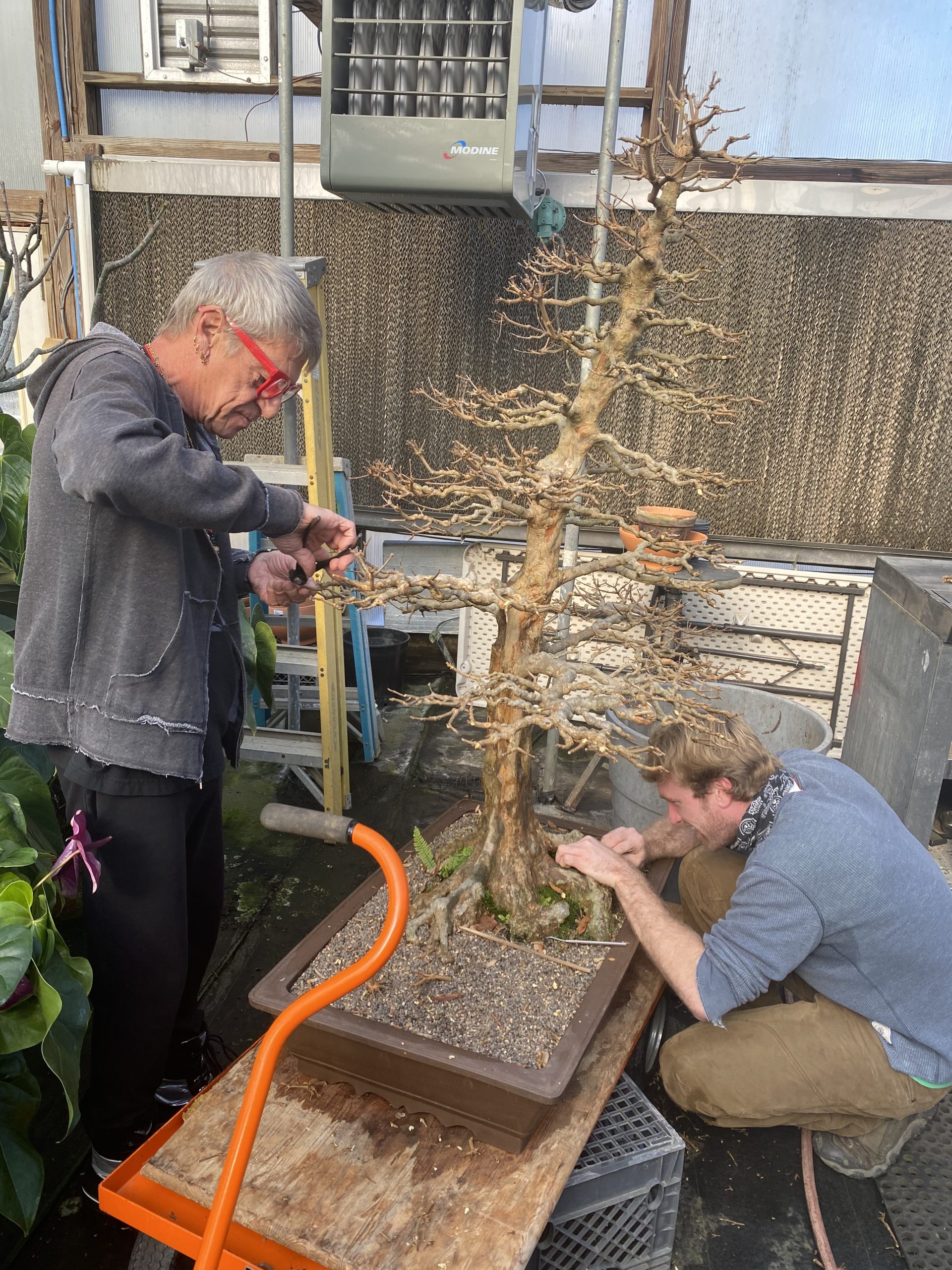
Bob Chilton (left) prunes the bonsai while Ryan Olsen, Lewis Ginter Botanical Garden Conservatory Horticulturist removes algae with a wire brush.
When talking about the methods of training, Stewart assured me that the trees are not being restricted or mistreated. The duo is very careful not to damage the bark when applying wire and is careful to remove it before the wire girdles and cuts into the tree.
The hour-long visit flew by, as I hung on every word from Stewart. While they are experts and hold a lot of clout in the bonsai community, the pair are especially humble. I can tell that it’s a true calling for them both and it moved me. The pair have a relationship with the bonsai that reflects the intuitive ability to understand each other’s role. It is an honor that the pair have agreed to share their art with Lewis Ginter Botanical Garden, as each specimen is a true extension of their being. It is quite vulnerable if you think about it. And, from my experience, the greatest connection comes from the ability to be vulnerable.
So, why bonsai? What is the purpose? The best way I can explain it is that it’s similar to any kind of practice. Take yoga for example. Everyone who practices yoga has a different reason for doing it. For some, it’s spiritual, and for others, it’s purely physical, or it’s both. People have their own personal reasons for practicing yoga, and I think the same goes for bonsai. One can be drawn to bonsai for many reasons. Stewart mentioned how people could be fascinated by the miniaturization of the tree “…like a boat in a glass bottle,” he explained. Some may gravitate towards the contemplative nature of the challenge that comes with cultivating bonsai. Whatever the reason, one thing that Stewart emphasized is that bonsai “is not something that you have, it is something that you do.”
The bonsai exhibit, Bonsai: For the Love of Trees is Lewis Ginter Botanical Garden’s first-ever formally curated plant exhibition to take place in the
North Wing of the Conservatory. This is an exciting opportunity for us — the planning, designing, and implementation of this special visitor experience. Personally, I think the Garden’s best work comes from cross-departmental collaboration, and the best exhibits come from partnering with experts in their field like Bob Chilton and Todd Stewart. The pair are nationally known for their bonsai and have exhibited at venues including the U.S. National Arboretum in Washington, D.C.
I hope each of you experiences the wonderful world of bonsai through visiting Bonsai: For the Love of Trees. We think you will definitely leave with more than you came with.
Bonsai: For the Love of Trees
Included with regular Garden admission
9 a.m. to 5 p.m. in the North Wing of the Conservatory
Sunday, January 30 to Friday, February 25, 2022
